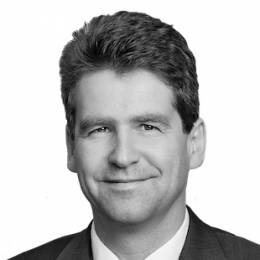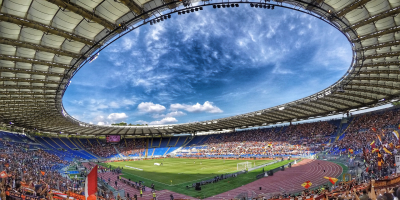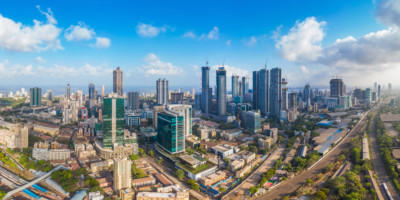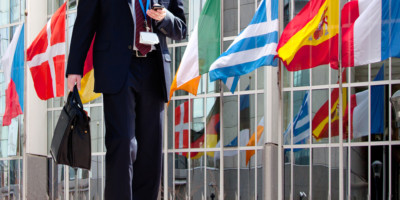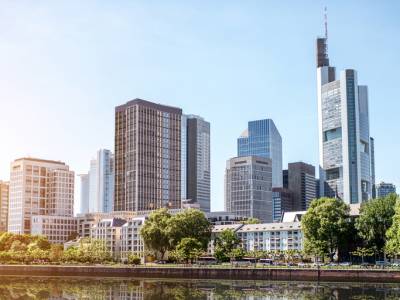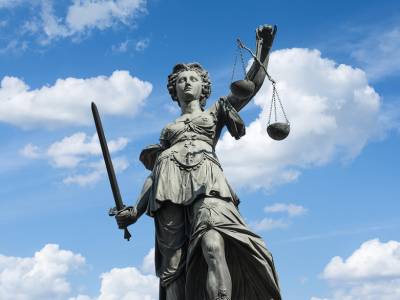-
Deutschland
Germany – Copyright and Design Patents
10 Juli 2017
- Geistiges Eigentum
- Markenzeichen und Patente
This post is the last of three small articles on the protection of IP rights in Germany. In the first we have already seen how the German Copyright Act protects creative and artistic works and how Design Patents protects achievements in the aesthetic field. In the second we focused the attention on Trademarks, Patents and Utility Patents, in order to verify how to best protect names, signs and technical inventions.
In this post we will concentrate on how the Act against Unfair Competition grants protection against unfair practices in the course of the business and the main procedural aspects of the IP claims in Germany.
Unfair Competition Law
The Act against Unfair Competition outlaws unfair practices in the course of business by a respective general clause. A number of specific practices are explicitly listed in the Act, in particular misleading advertising and other deceptive practices, psychological pressure, destructive competition and the unfair exploitation of work results (but only under special circumstances). The breach of law can also constitute an unfair practice, provided that the practice is aimed at gaining an unlawful advantage over competitors.
Unfair practices are not controlled by a state authority, but can be prosecuted by any competitor. In addition, private associations which exist for the promotion of commercial or of independent professional interests and qualified entities that are entered on a list of the Injunctions Act or on a list of the EU Commission for the protection of consumer interests may prosecute unfair practices.
Unfair Competition Law is partly harmonized within the EU by a Directive dealing with unfair practices against customers.
Procedural aspects
In German practice, most of the unfair competition and intellectual property claims follow the same pattern:
In case of a suspected infringement, the claimant usually sends a warning letter to the violating party, asking for a cease and desist statement that must be enforceable by a contractual penalty. If the allegation is true, the violating party has to bear the lawyer’s costs for the warning letter.
If the violating party refuses such a statement, the claimant can apply for a temporary injunction. Such an injunction will be granted by the court if the claimant can establish the claim and the urgency of the matter. In practice, the urgency is assumed, if the application has been filed within a short time frame after the applicant became aware of all relevant facts. However, there is no statutory time limit. Some courts deny urgency after more than one month, while other courts consider two months or even more as acceptable.
The addressee of a warning letter should always check the legal allegations and react within the time limit given, otherwise the risk of a temporary injunction without oral hearing is comparatively high. Such a court decision can be very detrimental, as most of unfair competition and intellectual property claims are finally decided or settled in injunctive proceedings.
If a temporary injunction is granted and the violating party does not appeal against the judgement, the claimant usually asks for a termination letter. During this stage, the matter can be settled, otherwise a regular lawsuit will follow.
While a temporary injunction is usually raised to prevent further infringements or the repetition of an unfair practice, the main proceedings can also cover remedy, damage, disclosure and account claims.
An important advantage for the plaintiff is his right to choose the venue. Usually he has the choice between the domicile or seat of the defendant and all places where the infringement or unfair practice has been committed. In particular in internet cases, this can be all over Germany.
Most of the German member states have established special courts and chambers for Intellectual Property and unfair Competition Law. Therefore the quality of decisions in this field of law is usually comparatively high.
In a previous post we outlined how the German Copyright Act protects creative and artistic works and how Design Patents protects achievements in the aesthetic field.
In this second of three posts on IP rights in Germany, we are going to focus the attention on Trademarks, Patents and Utility Patents, in order to verify how to best protect names, signs and technical inventions.
Trade marks
Trade marks identify products and services of an enterprise. By protecting such names and signs (such as words, letters, numbers, pictures, and even colours and sounds), the owner gets a monopoly on their use.
Protection is usually granted by the registration of the trade mark at the DPMA, but can also exist if a trade mark gets well known in the relevant market. There are some absolute grounds for refusal of the registration, the most important one being the lack of distinctiveness of the requested trade mark for the considered products and services. Trade marks which consist exclusively of signs or indications which may serve to designate the kind, quality, quantity, intended purpose, value, geographical origin or the time of production of the goods or of rendering of the service, or other characteristics of the goods or service, and trade marks which consist exclusively of signs or indications which have become customary in the current language or in the bona fide and established practices of the trade shall not be registered. But the office will not check on their own, if the new trade mark infringes trade marks of others. It is up to the owner of an older trade mark to challenge the new registration. However, the older trade mark can only attack the new application, if the older mark has been used in business within the last five years.
Registrations must be filed on a special form issued by the DPMA. It is important to include the list of goods and services for which the protection is sought. The exact fee for the application depends on the number of classes of such goods and services, starting at € 290,00.
The registration at the DPMA covers only the use in Germany. The protection can be extended by a Community trademark for the use in the whole EU (application fee starting at € 850,00) or by an international registration at the WIPO (application fee depending also on the number of countries for which the protection shall be granted).
A registered trade mark can be renewed indefinitely and last forever. However, the registration will be cancelled, if the renewal fee (DPMA: starting at € 750,00) is not paid every ten years.
Before the launch of a new name or sign for a product or a service, we recommend to always check if the name violates existing trade marks of third parties. If this is not case, it is recommendable to think about the protection of the new name or sign by registering an own trade mark, choosing the register (Germany, EU, WIPO extension to other countries) by considering the intended geographic markets.
Trade mark owners can sell and assign their trade marks to third persons. The owner of a trade mark can also grant others a right of use of the trade mark.
The Trademark Act also recognizes the protection of commercial designations, such as company symbols (names, firm names or special designations of business establishments or enterprises) and titles of works. These designations are not registered, but are protected by the use in the course of business.
Patents
Patents are granted for new technical inventions, giving the owner a monopoly for 20 years (starting from the date of the filing, under the condition of the payment of annual fees). The technical invention must be new, based on an inventive activity (requiring a high level of inventiveness) and susceptible of industrial use. It is not new if it has been described in any manner accessible to the public anywhere in the world before.
The most important part of the application is the publication of the invention. So other persons can challenge the validity of the patent on the one hand, and the patent can be a basis for further developments on the other hand.
Before filing an application for a patent, we recommend to always check if the publication of the invention can conflict with a business interests that may require secrecy, in order to avoid the raising of a dispute.
Patents granted by the DPMA are only valid in Germany. It is also possible to apply for a patent at the European Patent Office in Munich. It is also possible to file an international patent application under the Patent Cooperation Treaty. The advantage of such an international application is that there is only one application for more than one country. However, the application will be examined and the patent will be granted by the national patent offices of the countries which the inventor has selected for protection.
The patent holder can sell and transfer the patent. He can also keep the patent and grant licences to third parties.
Utility Patents and further technical protective rights
As the design patent is the small brother of the copyright, the utility patent is the small brother of the patent. The utility patent is also registered at the DPMA, but the substantive requirements for protection (novelty, inventive achievement and industrial application) are not examined during the registration procedure. The protection is granted up to ten years, but has to be renewed by paying maintenance fees after three, six and eight years. For the rest, utility patents and patents are very similar.
Utility patents granted by the DPMA are only valid in Germany. There is no EU utility patent and no international application for other countries. In some countries, utility patents are not recognized at all.
Finally, Germany acknowledges the statutory protection of semiconductor chip topographies and plant varieties.
German Law recognizes protection for certain creations of the mind and grants a set of exclusive rights for these creations. While the Copyright Act grants protection for works of literature, science and art without any further conditions, other intellectual property rights basically require a registration at the German Patent and Trademark Office (DPMA) or in an international register. Furthermore, the imitation of products not protected by intellectual property rights can violate the Act against Unfair Competition, which grants protection against any kind of unfair practice in the course of the business. Unfair competition lawsuits are very similar to lawsuits in the field of intellectual property law and usually follow the same pattern.
In this first post we will analyse the German Copyright Act, Neighbouring Rights and Design Patents. The next post will look into Trademarks, Patents and Utility Patents; while a third post will focus on the Act against Unfair Competition and the procedural aspects.
Copyrights and Neighbouring Rights
The German Copyright Act protects creative and artistic works, in particular linguistic works (for example books, speeches and software), musical works, works of pantomime including choreographic works, works of fine art including those of architecture, applied art and plans for such works, photographic works, films and illustrations of a scientific or technical nature. Ideas are not protected, as only the form of an individual and personal creation is the subject of copyright. The person who creates a work shall be deemed the author; several persons who have created a work jointly shall be deemed joint authors. As mentioned above, there is no registration of works, but in the case of anonymous or pseudonymous works the true name of the author can be submitted for entry in the Register of Authors at the DPMA.
Copyright shall protect the author with respect to his intellectual and personal relationship with his work on the one hand, and with respect to the utilization of his work on the other hand. The right of exploitation of the work can be licensed to third persons, but the copyright itself cannot be transferred to others (except by way of inheritance). Copyright expires 70 years after the author’s death.
The Copyright Acts grants also protection for economic efforts in relation to works. The so-called Neighbouring Rights cover for example the protection of the performer of a work, of the producer of an audio recording of a work, of broadcasting organizations and of the maker of a database
Germany has signed the most important international copyright conventions and therefore grants copyright protection to authors of the most states in the world, while these states also grant copyrights to German authors, based on the respective national law. Several European Union directives on special parts of copyright legislation have been implemented in Germany, but the harmonization within the EU does not yet cover the whole copyright system.
Design Patents
The design patent is the small brother of the copyright, because it also protects achievements in the aesthetic field. However, the German Design Patent Act grants only protection after the registration of the Design Patent at the DPMA. The design has to be new and needs an individual character. A design shall be considered new if no identical design has been made available to the public before the date of filing of the application for registration. It has an individual character if the overall impression it produces on the informed user differs from the overall impression produced on such a user by any design which has been made available to the public before the date of filing of the application. The protection is granted up to 25 years, but has to be renewed every five years by paying renewal fees.
The German design patent grants only protection for Germany. If the creator of an aesthetic form wants to exploit the design internationally, he can also apply for a European Design Patent at the European Office for Harmonization in the Internal Market for the EU or at the International Bureau of the World Intellectual Property Organization (WIPO). Newly, the European system even recognizes the protection of new designs that have not been registered, but only for three years since the design has been made available to the public.
Patent can be registered in Iran through an electronic application to the Iranian Intellectual Property Center of State Organization for Registration of Deeds and Properties. Iran regulations regarding this issue include Patents, Industrial Designs and Trademarks Registration Act (2008) and the Executive Regulation of Patent, Industrial Designs and Trademarks Registration Law (2009).
According to article 5 of the above mentioned Act, also Iran – as many other jurisdictions, such as Germany, Japan and EU – applies the First to File system.
Here below we are going to analyse the main steps of National Patent Registration: Application and Examination, Objection to Rejection, Inquiry and Registration or Rejection.
Application and Examination
The process of registration is mostly carried out electronically. The application is filed through the website of Iranian Intellectual Property Center.
The second step to register a Patent in Iran is the examination. Iranian regulations provide two types of examination regarding patent applications: Formal examination and Substantive examination.
After the classification made in accordance with the IPC (International Patent Classification), begins the formal examination of the application. At this stage, if the application information or appendices are incomplete, a notice of defects shall be issued by the Iranian registration authority and the applicant shall remove the defects and electronically submit all the correct information and appendices, within 30 days for the residents of Iran or 60 days for those residing overseas.
Once passed the formal examination, the registration authority has 6 months to verify that the application complies with the provisions of the abovementioned Executive Regulation. In the case that the patentability of the application is uncertain, a notice of conditional rejection shall be sent to the applicant, which shall submit the relevant reasons and documents in response to the patent rejection notice.
On the contrary, if the patentability of the application is certain, a research will be conducted in the database of the Intellectual Property Center to verify if there is a similar Patent. If so, a declaration regarding the existence of similar records shall be issued and the applicant shall prepare a report which explains the differences between the two records. If the research results show an identical previous registration, a rejection notice will be issued.
Objection to Rejection
At this stage, if the applicant has an objection, he can submit the motivations and evidences in support of the application, only after having payed the fees for Commission. This latter shall investigate on the matter and issue an official decision, which can be challenged within 60 days for the residents in Iran and 120 days for those residing overseas.
Inquiry
Following the examinations and the eventual objection process, it is possible for the registration authority to carry out an inquiry from specialized authorities to help provide a better substantive examination that lasts at most three months.
Afterwards, the applicant should submit the response of the inquiry through the website. In this case, the next steps might differ based on the negative or affirmative result of the inquiry.
Registration or Rejection
If the inquiry is affirmative the acceptance notice shall be issued, the application shall be registered and the registration fees shall be paid by the applicant within 30 days for the residents of Iran and 60 days for those residing overseas. After having paid the fees, the registration notice will be issued and published within 30 days after registration in the official gazette and, at last, the patent certificate can be issued.
In the case that the inquiry is negative, a warning notice shall be issued before the definitive rejection. The applicant can submit some supplementary documents in order to integrate the application; otherwise the rejection notice shall be issued.
The author of this post is Mohammad Rahmani.
Schreiben Sie an Stephan
Iran Patent Registration in a nutshell
14 Oktober 2016
-
Iran
- Geistiges Eigentum
- Markenzeichen und Patente
This post is the last of three small articles on the protection of IP rights in Germany. In the first we have already seen how the German Copyright Act protects creative and artistic works and how Design Patents protects achievements in the aesthetic field. In the second we focused the attention on Trademarks, Patents and Utility Patents, in order to verify how to best protect names, signs and technical inventions.
In this post we will concentrate on how the Act against Unfair Competition grants protection against unfair practices in the course of the business and the main procedural aspects of the IP claims in Germany.
Unfair Competition Law
The Act against Unfair Competition outlaws unfair practices in the course of business by a respective general clause. A number of specific practices are explicitly listed in the Act, in particular misleading advertising and other deceptive practices, psychological pressure, destructive competition and the unfair exploitation of work results (but only under special circumstances). The breach of law can also constitute an unfair practice, provided that the practice is aimed at gaining an unlawful advantage over competitors.
Unfair practices are not controlled by a state authority, but can be prosecuted by any competitor. In addition, private associations which exist for the promotion of commercial or of independent professional interests and qualified entities that are entered on a list of the Injunctions Act or on a list of the EU Commission for the protection of consumer interests may prosecute unfair practices.
Unfair Competition Law is partly harmonized within the EU by a Directive dealing with unfair practices against customers.
Procedural aspects
In German practice, most of the unfair competition and intellectual property claims follow the same pattern:
In case of a suspected infringement, the claimant usually sends a warning letter to the violating party, asking for a cease and desist statement that must be enforceable by a contractual penalty. If the allegation is true, the violating party has to bear the lawyer’s costs for the warning letter.
If the violating party refuses such a statement, the claimant can apply for a temporary injunction. Such an injunction will be granted by the court if the claimant can establish the claim and the urgency of the matter. In practice, the urgency is assumed, if the application has been filed within a short time frame after the applicant became aware of all relevant facts. However, there is no statutory time limit. Some courts deny urgency after more than one month, while other courts consider two months or even more as acceptable.
The addressee of a warning letter should always check the legal allegations and react within the time limit given, otherwise the risk of a temporary injunction without oral hearing is comparatively high. Such a court decision can be very detrimental, as most of unfair competition and intellectual property claims are finally decided or settled in injunctive proceedings.
If a temporary injunction is granted and the violating party does not appeal against the judgement, the claimant usually asks for a termination letter. During this stage, the matter can be settled, otherwise a regular lawsuit will follow.
While a temporary injunction is usually raised to prevent further infringements or the repetition of an unfair practice, the main proceedings can also cover remedy, damage, disclosure and account claims.
An important advantage for the plaintiff is his right to choose the venue. Usually he has the choice between the domicile or seat of the defendant and all places where the infringement or unfair practice has been committed. In particular in internet cases, this can be all over Germany.
Most of the German member states have established special courts and chambers for Intellectual Property and unfair Competition Law. Therefore the quality of decisions in this field of law is usually comparatively high.
In a previous post we outlined how the German Copyright Act protects creative and artistic works and how Design Patents protects achievements in the aesthetic field.
In this second of three posts on IP rights in Germany, we are going to focus the attention on Trademarks, Patents and Utility Patents, in order to verify how to best protect names, signs and technical inventions.
Trade marks
Trade marks identify products and services of an enterprise. By protecting such names and signs (such as words, letters, numbers, pictures, and even colours and sounds), the owner gets a monopoly on their use.
Protection is usually granted by the registration of the trade mark at the DPMA, but can also exist if a trade mark gets well known in the relevant market. There are some absolute grounds for refusal of the registration, the most important one being the lack of distinctiveness of the requested trade mark for the considered products and services. Trade marks which consist exclusively of signs or indications which may serve to designate the kind, quality, quantity, intended purpose, value, geographical origin or the time of production of the goods or of rendering of the service, or other characteristics of the goods or service, and trade marks which consist exclusively of signs or indications which have become customary in the current language or in the bona fide and established practices of the trade shall not be registered. But the office will not check on their own, if the new trade mark infringes trade marks of others. It is up to the owner of an older trade mark to challenge the new registration. However, the older trade mark can only attack the new application, if the older mark has been used in business within the last five years.
Registrations must be filed on a special form issued by the DPMA. It is important to include the list of goods and services for which the protection is sought. The exact fee for the application depends on the number of classes of such goods and services, starting at € 290,00.
The registration at the DPMA covers only the use in Germany. The protection can be extended by a Community trademark for the use in the whole EU (application fee starting at € 850,00) or by an international registration at the WIPO (application fee depending also on the number of countries for which the protection shall be granted).
A registered trade mark can be renewed indefinitely and last forever. However, the registration will be cancelled, if the renewal fee (DPMA: starting at € 750,00) is not paid every ten years.
Before the launch of a new name or sign for a product or a service, we recommend to always check if the name violates existing trade marks of third parties. If this is not case, it is recommendable to think about the protection of the new name or sign by registering an own trade mark, choosing the register (Germany, EU, WIPO extension to other countries) by considering the intended geographic markets.
Trade mark owners can sell and assign their trade marks to third persons. The owner of a trade mark can also grant others a right of use of the trade mark.
The Trademark Act also recognizes the protection of commercial designations, such as company symbols (names, firm names or special designations of business establishments or enterprises) and titles of works. These designations are not registered, but are protected by the use in the course of business.
Patents
Patents are granted for new technical inventions, giving the owner a monopoly for 20 years (starting from the date of the filing, under the condition of the payment of annual fees). The technical invention must be new, based on an inventive activity (requiring a high level of inventiveness) and susceptible of industrial use. It is not new if it has been described in any manner accessible to the public anywhere in the world before.
The most important part of the application is the publication of the invention. So other persons can challenge the validity of the patent on the one hand, and the patent can be a basis for further developments on the other hand.
Before filing an application for a patent, we recommend to always check if the publication of the invention can conflict with a business interests that may require secrecy, in order to avoid the raising of a dispute.
Patents granted by the DPMA are only valid in Germany. It is also possible to apply for a patent at the European Patent Office in Munich. It is also possible to file an international patent application under the Patent Cooperation Treaty. The advantage of such an international application is that there is only one application for more than one country. However, the application will be examined and the patent will be granted by the national patent offices of the countries which the inventor has selected for protection.
The patent holder can sell and transfer the patent. He can also keep the patent and grant licences to third parties.
Utility Patents and further technical protective rights
As the design patent is the small brother of the copyright, the utility patent is the small brother of the patent. The utility patent is also registered at the DPMA, but the substantive requirements for protection (novelty, inventive achievement and industrial application) are not examined during the registration procedure. The protection is granted up to ten years, but has to be renewed by paying maintenance fees after three, six and eight years. For the rest, utility patents and patents are very similar.
Utility patents granted by the DPMA are only valid in Germany. There is no EU utility patent and no international application for other countries. In some countries, utility patents are not recognized at all.
Finally, Germany acknowledges the statutory protection of semiconductor chip topographies and plant varieties.
German Law recognizes protection for certain creations of the mind and grants a set of exclusive rights for these creations. While the Copyright Act grants protection for works of literature, science and art without any further conditions, other intellectual property rights basically require a registration at the German Patent and Trademark Office (DPMA) or in an international register. Furthermore, the imitation of products not protected by intellectual property rights can violate the Act against Unfair Competition, which grants protection against any kind of unfair practice in the course of the business. Unfair competition lawsuits are very similar to lawsuits in the field of intellectual property law and usually follow the same pattern.
In this first post we will analyse the German Copyright Act, Neighbouring Rights and Design Patents. The next post will look into Trademarks, Patents and Utility Patents; while a third post will focus on the Act against Unfair Competition and the procedural aspects.
Copyrights and Neighbouring Rights
The German Copyright Act protects creative and artistic works, in particular linguistic works (for example books, speeches and software), musical works, works of pantomime including choreographic works, works of fine art including those of architecture, applied art and plans for such works, photographic works, films and illustrations of a scientific or technical nature. Ideas are not protected, as only the form of an individual and personal creation is the subject of copyright. The person who creates a work shall be deemed the author; several persons who have created a work jointly shall be deemed joint authors. As mentioned above, there is no registration of works, but in the case of anonymous or pseudonymous works the true name of the author can be submitted for entry in the Register of Authors at the DPMA.
Copyright shall protect the author with respect to his intellectual and personal relationship with his work on the one hand, and with respect to the utilization of his work on the other hand. The right of exploitation of the work can be licensed to third persons, but the copyright itself cannot be transferred to others (except by way of inheritance). Copyright expires 70 years after the author’s death.
The Copyright Acts grants also protection for economic efforts in relation to works. The so-called Neighbouring Rights cover for example the protection of the performer of a work, of the producer of an audio recording of a work, of broadcasting organizations and of the maker of a database
Germany has signed the most important international copyright conventions and therefore grants copyright protection to authors of the most states in the world, while these states also grant copyrights to German authors, based on the respective national law. Several European Union directives on special parts of copyright legislation have been implemented in Germany, but the harmonization within the EU does not yet cover the whole copyright system.
Design Patents
The design patent is the small brother of the copyright, because it also protects achievements in the aesthetic field. However, the German Design Patent Act grants only protection after the registration of the Design Patent at the DPMA. The design has to be new and needs an individual character. A design shall be considered new if no identical design has been made available to the public before the date of filing of the application for registration. It has an individual character if the overall impression it produces on the informed user differs from the overall impression produced on such a user by any design which has been made available to the public before the date of filing of the application. The protection is granted up to 25 years, but has to be renewed every five years by paying renewal fees.
The German design patent grants only protection for Germany. If the creator of an aesthetic form wants to exploit the design internationally, he can also apply for a European Design Patent at the European Office for Harmonization in the Internal Market for the EU or at the International Bureau of the World Intellectual Property Organization (WIPO). Newly, the European system even recognizes the protection of new designs that have not been registered, but only for three years since the design has been made available to the public.
Patent can be registered in Iran through an electronic application to the Iranian Intellectual Property Center of State Organization for Registration of Deeds and Properties. Iran regulations regarding this issue include Patents, Industrial Designs and Trademarks Registration Act (2008) and the Executive Regulation of Patent, Industrial Designs and Trademarks Registration Law (2009).
According to article 5 of the above mentioned Act, also Iran – as many other jurisdictions, such as Germany, Japan and EU – applies the First to File system.
Here below we are going to analyse the main steps of National Patent Registration: Application and Examination, Objection to Rejection, Inquiry and Registration or Rejection.
Application and Examination
The process of registration is mostly carried out electronically. The application is filed through the website of Iranian Intellectual Property Center.
The second step to register a Patent in Iran is the examination. Iranian regulations provide two types of examination regarding patent applications: Formal examination and Substantive examination.
After the classification made in accordance with the IPC (International Patent Classification), begins the formal examination of the application. At this stage, if the application information or appendices are incomplete, a notice of defects shall be issued by the Iranian registration authority and the applicant shall remove the defects and electronically submit all the correct information and appendices, within 30 days for the residents of Iran or 60 days for those residing overseas.
Once passed the formal examination, the registration authority has 6 months to verify that the application complies with the provisions of the abovementioned Executive Regulation. In the case that the patentability of the application is uncertain, a notice of conditional rejection shall be sent to the applicant, which shall submit the relevant reasons and documents in response to the patent rejection notice.
On the contrary, if the patentability of the application is certain, a research will be conducted in the database of the Intellectual Property Center to verify if there is a similar Patent. If so, a declaration regarding the existence of similar records shall be issued and the applicant shall prepare a report which explains the differences between the two records. If the research results show an identical previous registration, a rejection notice will be issued.
Objection to Rejection
At this stage, if the applicant has an objection, he can submit the motivations and evidences in support of the application, only after having payed the fees for Commission. This latter shall investigate on the matter and issue an official decision, which can be challenged within 60 days for the residents in Iran and 120 days for those residing overseas.
Inquiry
Following the examinations and the eventual objection process, it is possible for the registration authority to carry out an inquiry from specialized authorities to help provide a better substantive examination that lasts at most three months.
Afterwards, the applicant should submit the response of the inquiry through the website. In this case, the next steps might differ based on the negative or affirmative result of the inquiry.
Registration or Rejection
If the inquiry is affirmative the acceptance notice shall be issued, the application shall be registered and the registration fees shall be paid by the applicant within 30 days for the residents of Iran and 60 days for those residing overseas. After having paid the fees, the registration notice will be issued and published within 30 days after registration in the official gazette and, at last, the patent certificate can be issued.
In the case that the inquiry is negative, a warning notice shall be issued before the definitive rejection. The applicant can submit some supplementary documents in order to integrate the application; otherwise the rejection notice shall be issued.
The author of this post is Mohammad Rahmani.









